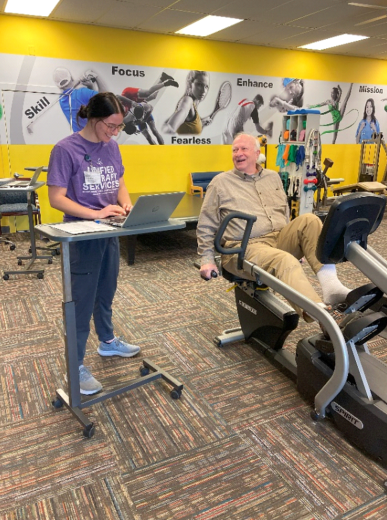
Falls are a serious concern for older adults. In fact, one in four Americans aged 65 and older will fall each year, making falls a leading cause of injury, hospitalization, and even death among seniors. However, the good news is that falls are largely preventable with the right precautions and support. Physical therapists play a crucial role in helping seniors stay safe, maintain mobility, and reduce the risk of falling. Here are some key fall prevention tips, important statistics, and ways the physical therapists at Unified Therapy Services can help.
Some important statistics about falls in older adults:
- 1 in 4 seniors will fall each year.
- Less than half of seniors who fall tell their doctor.
- Falls are the leading cause of traumatic brain injuries in older adults.
- Falls account for nearly 40% of all nursing home admissions.
Fall Prevention Tips
1. Exercise Regularly
Regular physical activity is one of the most effective ways to improve strength, balance, and flexibility—key factors in fall prevention. Engaging in strength training exercises can also improve bone health, which is important for reducing the risk of fractures if a fall does occur.
2. Check Vision and Hearing
Poor vision and hearing can increase the risk of falls. Have your vision and hearing tested regularly, and make sure you're wearing glasses or hearing aids as prescribed. If you notice any changes in your sight or hearing, speak to your doctor.
3. Modify the Home Environment
Falls often happen in the home, so making the living space safer is a critical step. Simple changes can make a big difference:
- Remove clutter, especially in high-traffic areas.
- Install grab bars in the bathroom, particularly near the toilet and in the shower.
- Use non-slip mats in the bathroom and kitchen.
- Ensure that hallways and stairways are well-lit and free of obstacles.
- Consider using a walker or cane if you need assistance with stability.
4. Wear Proper Footwear
Wearing shoes with good support and non-slip soles can reduce the risk of slipping or tripping. Avoid walking around in socks, slippers, or shoes with worn-out soles.
5. Take Your Time and Avoid Rushing
Rushing can lead to trips and falls. Take your time when standing up, walking, or navigating stairs. If you feel unsteady, stop, hold onto something, and regain your balance before proceeding.
How Our Physical Therapists Can Help Prevent Falls
1. Balance and Coordination Exercises
Physical therapists can teach exercises to improve balance and coordination, which are essential in preventing falls. One of the most effective types of balance training is called vestibular rehabilitation, which can help individuals improve their sense of balance and stability.
2. Strengthening Exercises
Weak muscles, particularly in the legs and core, are a significant risk factor for falls. We can provide targeted strength training exercises that improve muscle strength, support posture, and help with overall stability.
3. Gait Training
We can assess your walking pattern and identify any issues that may increase your fall risk. By addressing problems like uneven gait or difficulty with walking, the patient can attain safer movement strategies and provide the necessary tools to prevent falls.
4. Managing Chronic Conditions
Conditions like arthritis, osteoporosis, Parkinson’s disease, and neuropathy can affect mobility and increase the risk of falls. We can work with you to manage the symptoms of these conditions, improve mobility, and reduce fall risk.
Give us a call! We can help!
Working with one of our trained physical therapists is an excellent way to create a personalized plan that focuses on improving physical function, confidence, and safety. Give us a call if you would like more information or to schedule an evaluation at 563-583-4003.
Sources:
Michelle Sullivan, PT, DPT, Physical Therapist, Rehab Director
Katie Osterhaus, PT, DPT, LAT, Physical Therapist
American Physical Therapy Association (apta.org)
